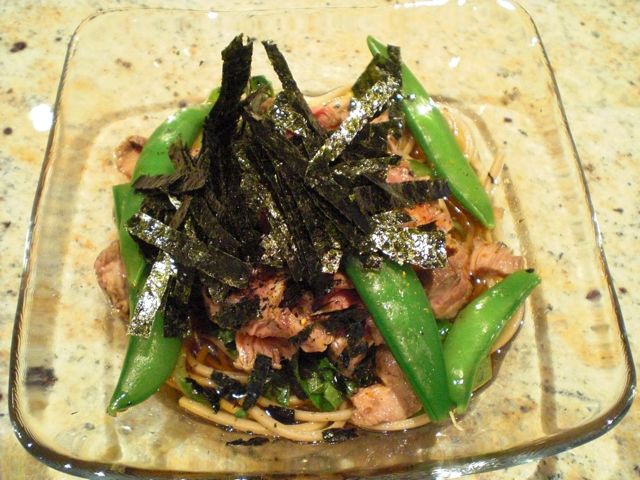Last year I posted
chestnuts rice or 栗ご飯. The chestnuts I bought at the gourmet market were probably of European origin and not particularly fresh. They were basically tasteless and had a really chalky consistency. In that post, I also mentioned that almost all North American chestnut trees were wiped out by the
Chestnuts blight around 1940. But, at that time, by searching on the web, I found out that small numbers of chestnut groves survived and some farms are indeed producing North American chestnuts. By the time I got onto this last year, the season was over and I could not get the North American Chestnuts. This year, I was prepared and as soon as the chestnuts season came around, I placed my order. Although there are a few farms that sell chestnuts, mine came from
Girolami farms in Califronia.
Here is a 3 lb bag of North American chestnuts I received (#1 below). They look excellent and are fairly big.
Chestnuts preparation: I soaked the chestnuts in boiling water (off heat) and let them soak until the water cooled down to room temperature. This softened the outer skin ("onikawa" 鬼皮 or demon skin) and made them easier to peel. Using a sharp paring knife, I first cut the bottom of the chestnut and peeled off the outer skin and then removed the inner skin ("shibukawa" 渋皮 or bitter skin). The inner skin was more difficult to remove, although for some I got lucky and it came off in one piece. For many of them I had to shave off some of the meat of the nuts to get the skin off (#2 below). I prepared 11 chestnuts (for 2 Japanese cups or 360ml of uncooked rice). As I peeled the inner skin I soaked the nuts in water to prevent discoloration and some starch leached out as well.
Rice: I used two cups (the measuring cup that came with the rice cooker--180ml. I understand that a regular Japanese cup is 200ml and an American cup is 240ml) of rice (360ml); a combination of regular Japanese short grain rice (Koshihikari コシヒカリ variety from California called "
Kagayaki" かがやき) and "
mochigome" 餅米 (glutenous or sweet rice), one rice cooker cup (180ml) each. After washing the rice in running cold water until the water ran clear. I drained the rice in a fine meshed strainer and let it sit in the strainer until I was ready to cook it.
Broth: I decided to use a seasoned "dashi" broth for this dish. I made dashi broth from a
dash pack (combination of bonito flakes and kelp). In the cooled down dash broth, I added light colored soy sauce or "usukuchi shouyu 薄口醤油 (1 tbs) and mirin (1 tbs) and made it 400ml total.
Cooking: I used "
Kamadosan" かまどさん, an earthenware rice cooker. I added the rice, broth and, for a good measure, a 3 inch square of dried kelp (surface wiped with damp paper towel) and arranged the prepared chestnuts on the surface. As per the instructions that came with the rice cooker, I set the steam holes of the inner and outer lids perpendicular to each other and placed it on a medium high flame for 14 minutes. I then shut off the heat and let it steep for 20 more minutes (#4 above).
While the rice was steeping, I made a small cucumber and
myouga sunomono 胡瓜と茗荷の酢の物 (left in the back in the first picture).
I removed the kelp and mixed the rice while trying not to break the chestnuts. The bottom had a very slight crust of "
okoge" おこげ. I served it with a garnish of black sesame seeds (The first picture above).
The result? Much better than
last year--a world of difference. The chestnuts were much sweeter and while they had the somewhat dry texture characteristic of chestnuts, it was pleasing and definately not chalky. The addition of the glutenous rice gave the dish a sticky consistency or "mochimochi" もちもち consistency. The seasoned broth that I used also added a subtle but nice flavor. So, I have to say this was a success. We are glad that North American chestnuts have survived and we can enjoy them.










